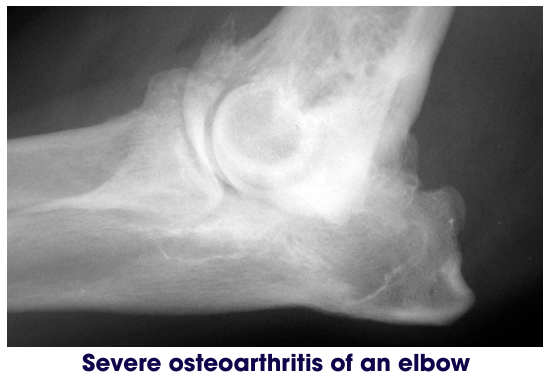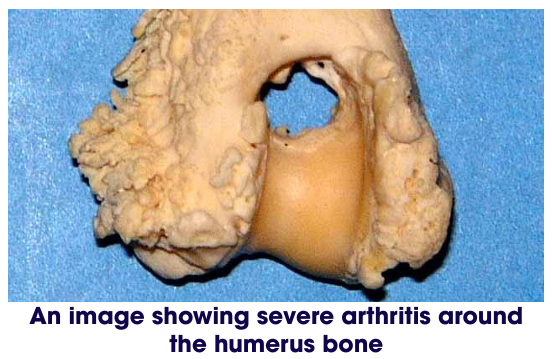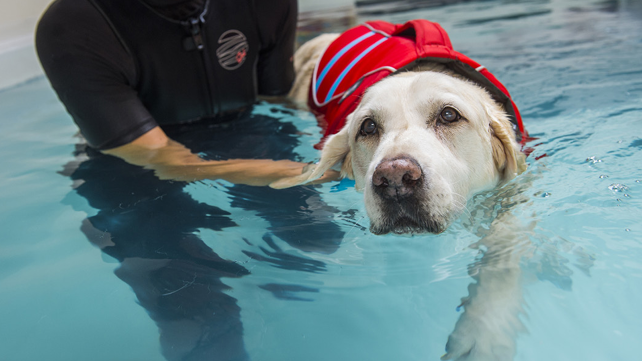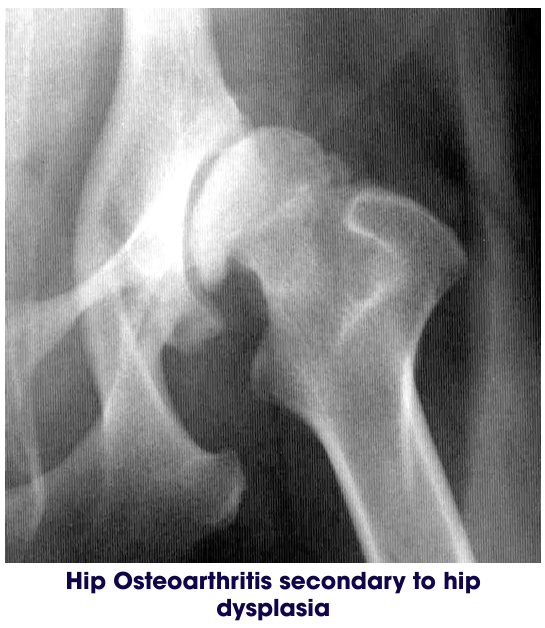What is Osteoarthritis?
Osteoarthritis is a common condition that affects one or more joints in dogs and cats. It is a degenerative disease that leads to progressive changes in the smooth cartilage surface that covers the ends of bones, the bone underneath the cartilage, the joint capsule and the joint fluid. Osteoarthritis may be due to “wear and tear” of the joint as the animal ages, however it is most commonly due to an underlying orthopaedic condition. Underlying conditions may be developmental diseases such as hip and elbow dysplasia, joint instability due to ligament injuries i.e. cranial cruciate ligament disease, and traumatic injuries i.e. fractures involving the joint and luxation.
What are the clinical signs of Osteoarthritis?
- Stiffness, which may improve after joint “warms up”
- Lameness
- Pain
- Difficultly getting up/jumping/climbing stairs
- Behavioural changes – restlessness, less interactive, aggression


How is osteoarthritis diagnosed?
An orthopaedic examination can identify features associated with osteoarthritis such as thickened, swollen and painful joints, with a reduced range of motion (ability to bend and stretch the joint). It can also assess for any underlying conditions that may be related to the development of osteoarthritis.
Radiographs (x-rays) under general anaesthesia or sedation are the most commonly performed test to confirm the presence of osteoarthritis within a joint. Depending on your pet’s health, the joint affected and the presence of other clinical signs, further tests such as blood tests, joint fluid sampling and further imaging (e.g. CT scan) may be suggested.
How can osteoarthritis be treated?
Unfortunately osteoarthritis is not “curable”, but it can be managed to minimise the impact it has on a pet’s quality of life and lifestyle, and to slow the progressive changes within the joint. Pain associated with osteoarthritis tends to fluctuate in its severity, with “silent” periods during which your pet may only have some mild stiffness on rising, and “active” periods during which the pet is more uncomfortable and lame.
Conservative Management of Osteoarthritis
This is the use of non-surgical treatment to manage osteoarthritis. This may be done as the primary treatment or following other interventions if osteoarthritis persists or develops.
• Weight Management
Maintaining the correct, or even better a slightly lean, bodyweight is important to reduce the weight carried through the joints and to minimise the progression of osteoarthritis. This can be harder in pets that have restricted exercise. Regularly monitoring your pet’s weight and if appropriate, discussing a weight loss programme and appropriate diet with your referring veterinary practice can be vital in managing osteoarthritis.
• Exercise Management
During a painful period when osteoarthritis signs have flared up, exercise will need to be reduced to short periods of regular on lead exercise. Exercise should not be stopped altogether to reduce the joints “stiffening up.” In periods where osteoarthritis signs are well controlled, exercise can be increased, and adapted to suit what the individual pet can manage comfortably. Excessive exercise or activities which exacerbate osteoarthritic signs should be avoided.
• Home environment modifications
As the severity of osteoarthritis progresses over time, or during a “flare-up”, pets may find modifications to their home environment helpful, such as using non-slip flooring mats, deep bedding and ramps to aid dogs getting into the car boot or to negotiate steps. Due to reduced exercise pets may need their nails trimming more frequently.
• Pain killers / anti-inflammatory drugs
There are many types of pain killers that can be used to reduce the discomfort of osteoarthritis. The frequency and types of medication used should be adapted to the individual pet, and to the severity of osteoarthritic pain as signs fluctuate, and will be discussed on an individual basis. There are potential side effects of all medication, and pets on ongoing medication should have regular prescription checks to ensure that their medication meets their current requirements. For pets with complex pain relief requirements, appointments with a pain specialist can be made with the Langford Vets Small Animal Referral Hospital’s Pain Clinic.
• Joint supplements
Products containing joint supplements such as omega-3 fatty acids, glucosamine, chondroitin, PCSO-524 or green-lipped muscle have been suggested to help to improve joint health. This group of products appear to be beneficial in some patients and their use can be discussed with us or your referring vet.
What if my pet’s signs don’t improve with conservative osteoarthritis treatment?
Depending on your pet’s overall health, the joint that is affected and the severity of osteoarthritis, there may be surgical options designed to improve joint comfort. Salvage (“last resort”) procedures such as joint fusion or joint replacement may be possible treatment options. Please do not hesitate to contact your referring vet or the orthopaedic department should you have concerns regarding your pet’s osteoarthritis.


